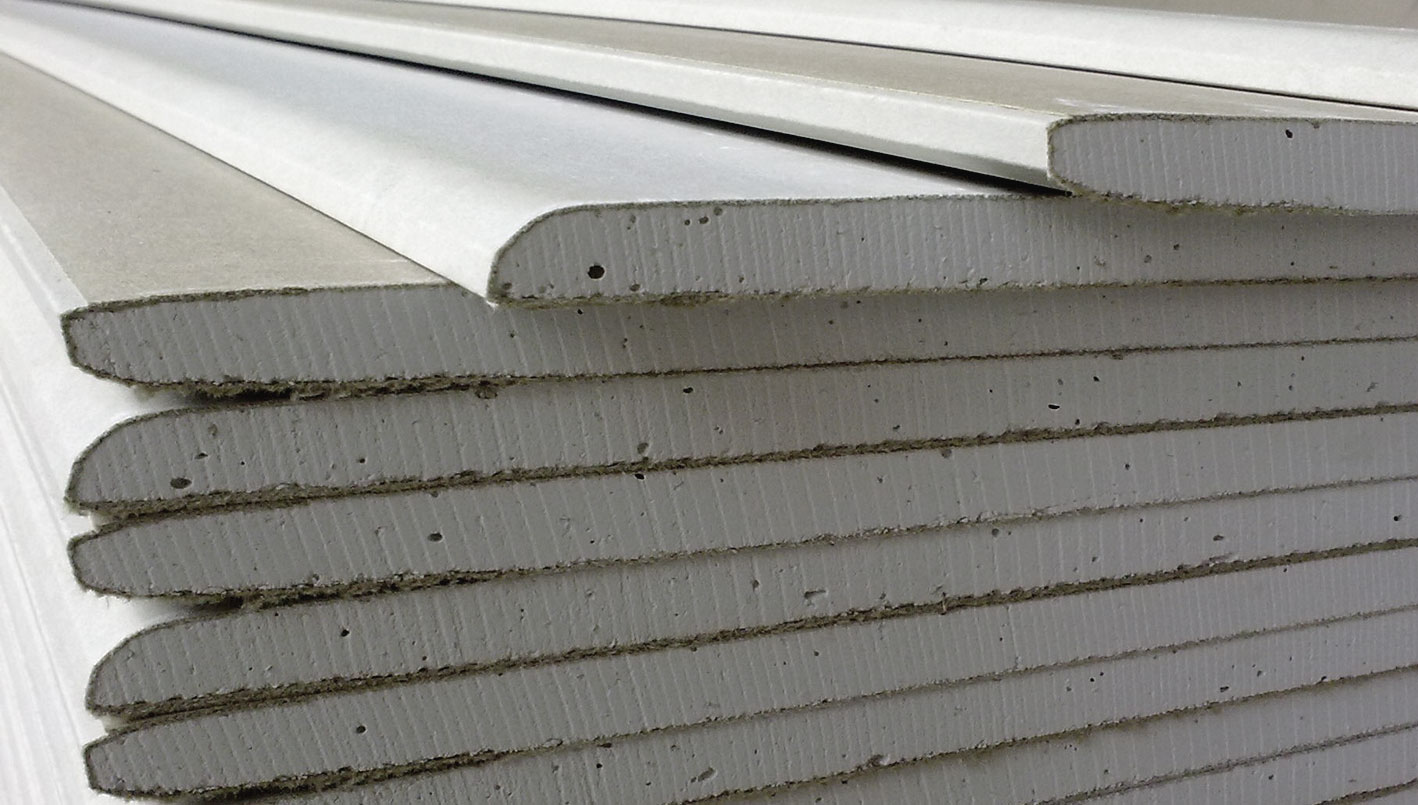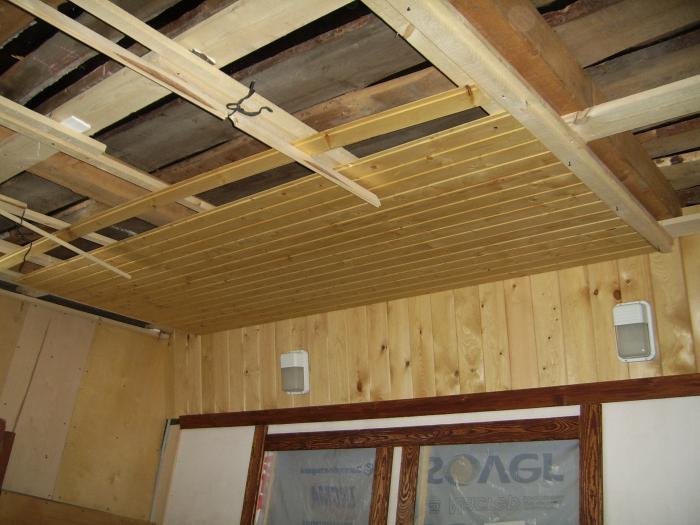Finishing the ceiling in a wooden house is one of the most important stages of repair work, on which both the appearance and its performance properties depend. Therefore, you need to carefully consider this issue.
Material selection
 The materials used in the traditional finishing of concrete (or other) wood ceilings simply cannot be applied. At least most of them. The reason for this is the very material from which the house is built.
The materials used in the traditional finishing of concrete (or other) wood ceilings simply cannot be applied. At least most of them. The reason for this is the very material from which the house is built.
What solutions can be used
- Stretch ceiling.
- Plastic panels.
- MDF panels.
- Wood trim.
Work with drywall is possible only if the walls are completely closed, and there are no visual manifestations of wood. In other cases, from the point of view of design, such material cannot be used.
Stretch ceilings require prior approval. When deciding to use such a solution, it is better to invite a specialist who can choose the option that harmoniously fits into the overall design of the room. A careless choice can become both a hallmark of a room and a complete failure.
The use of plastic panels is advisable when expensive finishing material is used. Ideally, if the surface of the future ceiling imitates the structure of a tree. Cheap plastic should not hesitate to exclude from the list of options.
MDF is one of the best options. Finishing the ceiling with such panels requires high-quality waterproofing. Its absence as such will lead to the fact that the surface will quickly lose its presentable appearance and require an early replacement.
Wood paneling is a 100% successful solution. As a result, the coating will be in perfect harmony with the general appearance of the room, and there are simply no obvious shortcomings in such an implementation. Next, we suggest that you familiarize yourself with this option in more detail.
Benefits of using wood for ceiling cladding
 A lining board is usually used, which has the following advantages:
A lining board is usually used, which has the following advantages:
- Thanks to the treatment with modern impregnations, the life of the tree is significantly extended. Therefore, the coating does not have to be changed frequently.
- Ecology. In the era of polymers, wood is still relevant.
- Good heat and sound insulation. Inside the house will always be warm and cozy.
- Quick cladding installation. Before starting work, plastering and leveling of the attic floor is not required. All repairs are much faster.
- Nice appearance. Most likely, everyone will agree that a wooden ceiling in a house made of the same material is the best solution.
A few words about the shortcomings
Any material has its drawbacks, and lining also has them:
- High fire hazard. True, in a wooden house this does not play a significant role.
- Before sheathing, the panels must be treated with a flame retardant.
- In addition, the lining must be protected from fungus and insects with special means.
- The tree does not cope well with changes in humidity, as well as temperature.
Types of materials
 The lining is made from the following types of wood:
The lining is made from the following types of wood:
- Pine.
- Linden.
These are the main types of materials that are advisable to use in the ceiling sheathing.
Pine lining is a budget option that does not require large financial investments. Good texture and color. If the temperature in the room often rises, a large amount of resinous substances are released from the panels. The most popular option used in wooden houses.
Linden lining differs from pine only in that it does not emit any substances at high temperatures. The rest is the same option.
Oak lining is an expensive solution that is often used in luxury cottages. It makes no sense to talk about the advantages and disadvantages - an oak is an oak.
How to calculate the amount of material
Due to the high cost of lining, unlike other types of finishing materials, it is not worth buying it with a margin. Therefore, before buying it is advisable to make a small calculation.
Please note that the board is sold in the form of plates of a fixed size (long enough). For a room measuring 2.4x3m, it is enough to purchase 6-meter pallets, then cut them in half and make a ceiling with minimal waste. As support bars, the best solution would be pine with a size of 20x20 or 30x30 mm.

